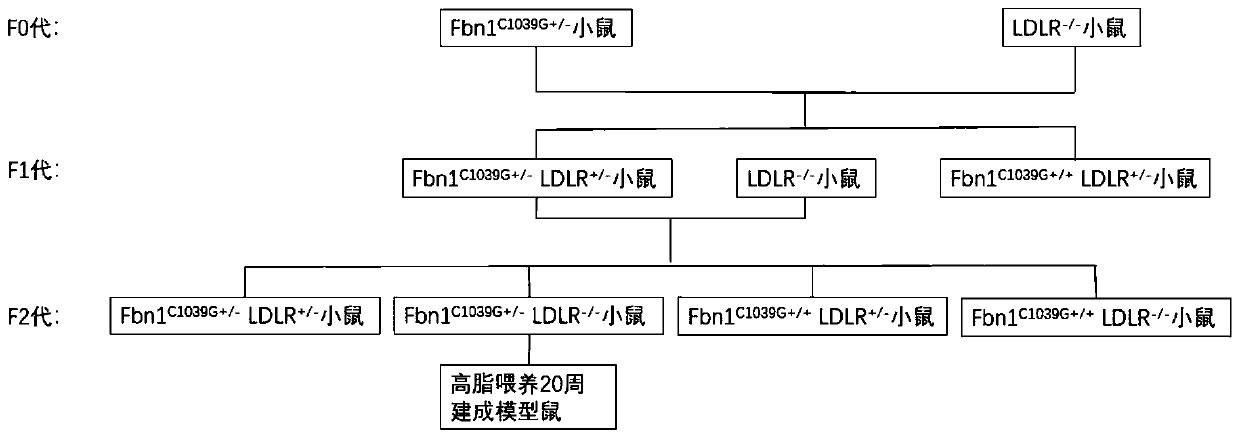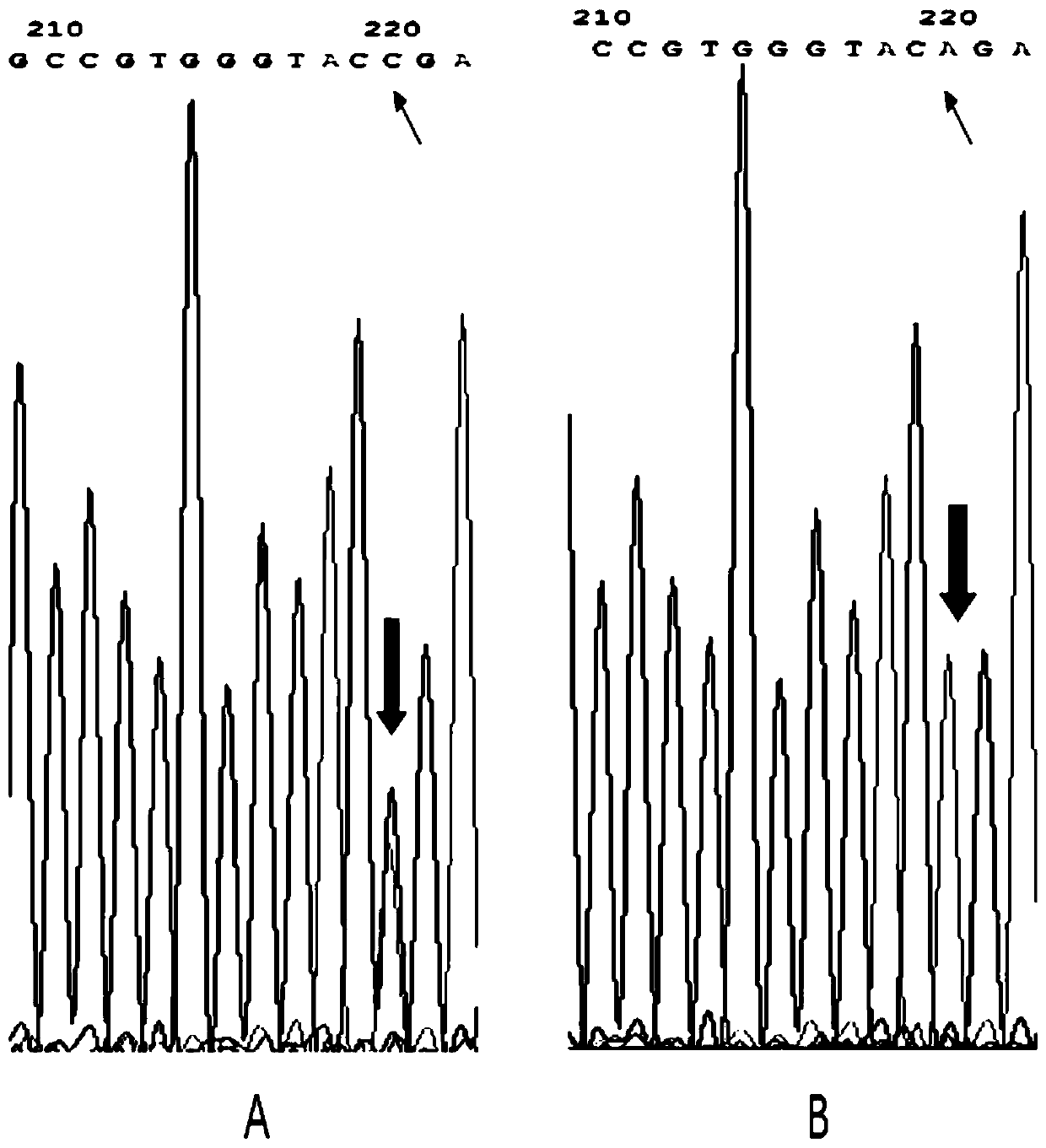Construction method of atherosclerosis vulnerable plaque mouse model
A technology for atherosclerosis and vulnerable plaque, which is applied in the direction of animal husbandry, etc., can solve the problems of difficult operation, rapid plaque formation, poor repeatability, etc., and achieves a simple and easy method, easy reproduction, and high repeatability. Effect
- Summary
- Abstract
- Description
- Claims
- Application Information
AI Technical Summary
Problems solved by technology
Method used
Image
Examples
Embodiment 1
[0031] Example 1 Construction and Identification of Atherosclerotic Vulnerable Plaque Mouse Model
[0032] Model diagram for establishment of atherosclerotic vulnerable plaque mouse model figure 1 shown.
[0033] 1. The mice whose genotype is Fbn1 heterozygous point mutation (genotype: Fbn1 C1039G+ / - , purchased from Jackson Laboratory, USA) and LDLR knockout mice (genotype: LDLR - / - , purchased from Beijing Huafukang Biotechnology Co., Ltd.) to obtain F1 mice by hybridization, the genotype is Fbn1 C1039G+ / + LDLR + / - or C1039G+ / - LDLR + / - . The tail tissues of the F1 generation mice were taken to extract DNA. (The DNA extraction kit is: blood / cell / tissue genomic DNA extraction kit: Tiangen DP304-02).
[0034] 2. To identify the Fbn1 genotype of the F1 generation, amplify the mouse tail DNA by PCR. The PCR system is: 2xTaq PCR MasterMix: 12.5 μL, 10 μM (1 μL) for forward and reverse primers, 100 ng of genomic DNA, and add ddH 2 0 to 25 μL, reaction conditions: 94°C fo...
PUM
 Login to View More
Login to View More Abstract
Description
Claims
Application Information
 Login to View More
Login to View More - R&D
- Intellectual Property
- Life Sciences
- Materials
- Tech Scout
- Unparalleled Data Quality
- Higher Quality Content
- 60% Fewer Hallucinations
Browse by: Latest US Patents, China's latest patents, Technical Efficacy Thesaurus, Application Domain, Technology Topic, Popular Technical Reports.
© 2025 PatSnap. All rights reserved.Legal|Privacy policy|Modern Slavery Act Transparency Statement|Sitemap|About US| Contact US: help@patsnap.com



